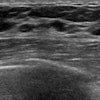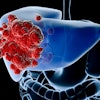
CLEVELAND - As healthcare institutions convert to digital image management, they can't afford to neglect a comprehensive quality assurance program, according to Stephen Thompson, a medical physicist at the M.D. Anderson Cancer Center in Houston.
"If you have one or more digital devices, you need to be doing quality assurance," Thompson said. Thompson made his comments during a SCAR University session on designing a quality assurance program for the digital department at the Symposium for Computer Applications in Radiology.
To design an effective QA program, it's important to first understand the process of generating images and reports, mapping how they are created and delivered to the referring physician, he said. Next, the QA team should be formed, and should include a medical physicist, PACS administrator, radiology technologist and technologist supervisors, department administrator, radiologist, clinicians, and an IT representative, Thompson said.
In the third step in the process, the QA team should examine both image production and image availability (display) procedures. Indicators/QC checks should be created based on the process map developed in the first step, centered on relevant points to examine the quality of the imaging procedure, he said.
Items that are candidates for inclusion in a QA program include: the x-ray tube and generator, phototimer calibration and setup, CR reader and CR cassettes/plates, QC station display, and laser/dry printers, Thompson said. The radiologist workstation also requires constant calibration and QA, he said.
Competency assessment of technologists should be performed, allowing for education on the creation of images and the technologist's role in maintaining quality, Thompson said.
Thompson said that each digital image should also be inspected for:
- Positioning and markers.
- Density/contrast/artifacts.
- Proper radiation exposure to the imaging plate.
- Processing parameters.
- Print size.
- Reject/repeat analysis.
For image availability, the QA team needs to ensure that images contain correct patient and procedure demographics, and that auto transfer of digital images is properly performed, he said. In addition, the team must proactively monitor the status of the network and prepare plans for operation during system downtime. Thompson said that multiple layers of backup and disaster prevention are also called for.
In the last step, the QA team needs to perform the required step of reviewing the results of the QA indicators, Thompson said. It may be possible to achieve quality improvements such as a reduction in frequency of QA events through root-cause analysis, and finding monitors that fail less frequently through monitor QC, he said.
Ultimately, knowledge of process and technology is required for a good QA program, Thompson said.
"A lack of a QA program can result in poor patient care," he said.
By Erik L. Ridley
AuntMinnie.com staff writer
May 5, 2002
Copyright © 2002 AuntMinnie.com



















